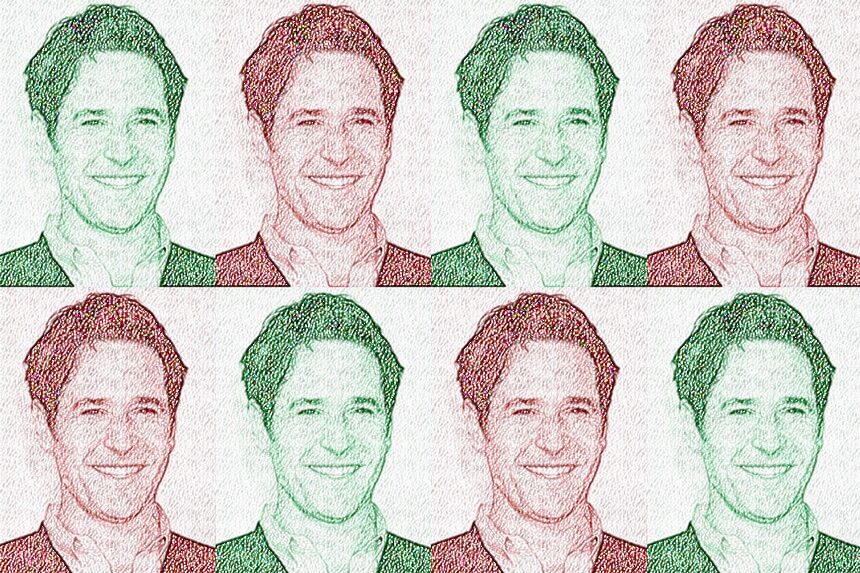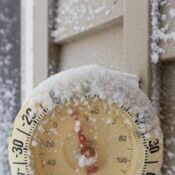It was a cold December morning in the 1980s and my older sister Beth was taking me to the movies. She was driving an old white Chevy Impala — a rusted boat of a car. As we waited for the heater to putter to life, we played The Carpenters’ Christmas Portrait album on the 8—track. I don’t remember the movie we were going to see, and it didn’t matter. Because leaving our gravel driveway represented the one thing that we desired most — freedom.
We were poor, living in squalor in rural North Carolina with our hard—working older brother and our mercurial mother. So, two hours away from home was like a vacation. When we couldn’t escape to the cinema, we’d transport ourselves to worlds outside our small town through our favorite TV shows and made—for—television movies. We imagined ourselves living the glamorous life of Donna Mills in The World’s Oldest Living Bridesmaid. Or being saved from poverty by Eric McCormack in Borrowed Hearts.
We’d grown up hunting arrowheads in our grandmother’s backyard hearing stories of the nearby Cherokee reservation, so when we saw a TV series celebrated the indigenous tribes of Alaska, we were captivated. The show was Northern Exposure, a beautifully singular magical dramedy. Starring Rob Morrow as Dr. Joel Fleischman – a neurotic, cosmopolitan New Yorker, fresh out of medical school – I had no idea then how the series and he would come back into my life when I needed them most.
Time spent at the movies and watching shows on the TV set was a key part of our survival – my sister and I could spend an hour or two in a world that had structure. And a clean home. And nice clothes. And, of course, cute boys. From a young age, I started writing. It was cathartic. With that pen and paper, I could create my own structure. Imagine clean homes. And nice clothes. And those cute boys who had to do what I told them. In real life, I had little power. As a writer, I got to control everything.
Eventually, my passion for storytelling evolved into a career as a screenwriter in Los Angeles. And if it hadn’t been for Beth toting me around to the cinemas in Winston—Salem, I don’t know that I would have ever had the time and space to dream so big. Beth would stay back home, but she fulfilled her dream too – she became a nurse.
In 2014, my mother told me something was wrong with Beth. She was struggling to breathe. Her lips were turning blue. My sister didn’t want me to know the truth. But eventually I learned her struggle had a name: Non—Specific Interstitial Pneumonitis (NSIP). Years later, it led to pulmonary fibrosis – scar tissue was forming all over her lungs, depleting her capacity for oxygen. She never drank or smoked – why her? As her condition worsened, her only shot at extending her life was a bilateral lung transplant. She was willing to take the chance.
But in February 2023, my sister called and told me her news: A transplant wasn’t possible. There was too much scar tissue for new lungs. A double lung transplant had been her only hope of extending her life, and now that hope was gone. She was scared. And she didn’t want to die.
This wasn’t how I imagined her last few months going. I was supposed to be able to treat her to bucket list adventures. Take her to Disney World. We’d just talked about their accommodations for the disabled, and I assured her she’d be able to ride the Winnie the Pooh ride. (She was carrying oxygen tanks at that point.) Eeyore was her favorite, so I imagined her getting to meet him. Taking pictures.
Three weeks later, she was gone.
In my world — the movies — dying people get to live their best lives in their final weeks. Wishes are fulfilled, patients take trips to the ocean. My sister’s final weeks were far less cinematic. She had to call her dentist to tell him there was no longer a need for her to get fitted for false teeth. Her GoFundMe for surgery transitioned to one for “final expenses.” She spent her last days in the hospital struggling to breathe, her chest heaving up and down with the oxygen being forced into her.
After Beth died, my husband Charles and I traveled cross country by car, with our two dogs, to my hometown. The trip was 8—10 hours of driving each day, overnight in a dog—friendly hotel, with TV shows on my laptop before bed.
When we arrived in my hometown, I went straight to the funeral home. This wonderful sister who’d gifted me so many of the best adventures and memories of my life – she was quiet. Still. Wearing a blue sweater she’d recently purchased.
The next day, my friends, family, and I gathered in the church to say our goodbyes to the best sister, the most dedicated nurse. Our Beth. The Nurses Honor Guard – dressed in their caps and capes – recited the Nightingale Tribute and officially “released Beth from duty.” As she was carried out of the funeral home, the song “Under the Boardwalk” played. I sobbed with regret — I had wanted to take her to the beach one last time.
Three months later, my mother died from dementia. I was still hollowed out by the death of my sister. Grief, it seemed, would take up permanent residence inside of me. I went from feeling the raw pain of loss to feeling empty. Which, for me, was worse than sadness. I was in a void.
Once again Charles and I were making the same cross-country trip with our dogs. Driving. Hotels. TV before bed.
I had been diving into my favorite TV pilots to inspire me as I ventured into creating a series. Top of my list was that show from my childhood, Northern Exposure.
So, each night while we were on the road, my husband and I would settle into whatever Hampton Inn or La Quinta hotel room we were in and visit with Dr. Joel Fleischman. In the series, Fleischman is the quintessential fish out of water amidst Native Alaskans and quirky transplants in the fictional small town of Cicely. While Fleischman is a man of science, the locals are more spiritual. And the show celebrates Native beliefs and connection to nature. As people of faith ourselves, it was nice to spend time in a TV universe that acknowledges the world beyond the physical realm.
Revisiting Northern Exposure 30 years after it first aired made me appreciate how prescient and timeless it was. Sharing it with my husband — a millennial, 14 years my junior — who had never seen it, was especially satisfying. He was hooked from episode one. So much so that we started building our night around watching it. We didn’t just love the show, we adored Rob Morrow’s performance as the lead character and marveled at just how perfect he was in the role. So much so that we called our evening routine “Fleischman time.”
I was soothed. My spirit calmed. And I could rest.
After watching the episode in which Fleischman’s character leaves Cicely – and thereby the series – I sobbed. I knew it was coming, but the tears flowed anyway. My balm was gone. “Fleischman time” was over. We found another series to watch, but nothing held the same healing, unifying space in our lives.
With nothing to distract me, I spent more time thinking about my age. My mortality. With every pain in my knee or back I felt one step closer to the grave, like a battery that had lost its charge. Thankfully I had the loving anchors of my husband and two dogs keeping me present, but the thought, the feeling of ebbing toward death was there. It was as if the life force had drained out of me.
As December approached, I wasn’t sure how I would find my Christmas spirit. The more the world shouted that “it’s the most wonderful time of year” the more I scoffed. Every bit of the holiday magic did nothing but remind me of the joy I wasn’t feeling… and the loss that was in its place.
My husband and I had started following Rob Morrow on Instagram and learned he would be performing with a musical group called The Tribe. They were doing a fundraising concert for the Get Together Foundation in one of our favorite nearby towns, Westlake Village. I took this as a sign.
I was meant to see Rob Morrow in person.
Charles and I went to the fundraiser concert in early December. I got a seat in the front row of what was an intimate club setting. I saw so many musicians, many older than I am, who were standing on that stage, playing their hearts out, so full of energy. Their enthusiasm was soon pulsing through me like an infusion from the fountain of youth.
At one point they played Christmas from The Who’s Tommy, one of my favorite Broadway shows. Suddenly I was transported to New York City in 1994. I was 22 again. The world was ahead of me. And my sister was still alive.
Midway through the concert, Morrow took the stage. In green flannel with matching sneakers. A wintry scarf around his neck and a hat atop his full head of hair. He looked like a young man – his grin reaching all the way to his twinkling eyes, just as it had been 30 years before. His youthfulness was yet another defibrillator for my weakened, grief-stricken spirit.
It was Fleischman time again. Only this time it was real.
In that moment I gained new appreciation for the power of live performances. Seeing actual people on that stage made me feel alive. The vibrations in that room electrified me. Made me feel engaged. Connected once again to the experience of being human. I felt like blood was coursing through me, my heart beating again after months of being in suspended animation.
That night, as I left the venue, I told Charles through tears of joy that I felt like myself again. A year later, I still feel the aliveness of that night.
Cicely, Alaska’s favorite doctor had saved Christmas…for me. “Fleischman time” was back. And thanks to Rob Morrow, so was I.
Become a Saturday Evening Post member and enjoy unlimited access. Subscribe now




Comments
Your grandma must have lived near where my maternal family is from in Jackson County, NC also near Cherokee (and it’s actually the Qualla Boundary, not a reservation).
I too love the Northen Exposure series, just started rewatching it a few weeks ago. If you ever get out to Seattle, you must take the drive out to Roslyn, Wa where it was filmed. They have a gift shop/museum in the building where his office was located (and Dr. Joel Fleishman is still painted on the window) you can eat at The Brick (but the inside looks different than they made it on the show. Don’t miss the running water trough under the bar for those who spit tobacco) and you can see the display for KBHR in the same location it was on the show, across from The Brick. Also Maggie’s house is there, as well as the church. Oh and Ruth Ann’s store is still there as well.